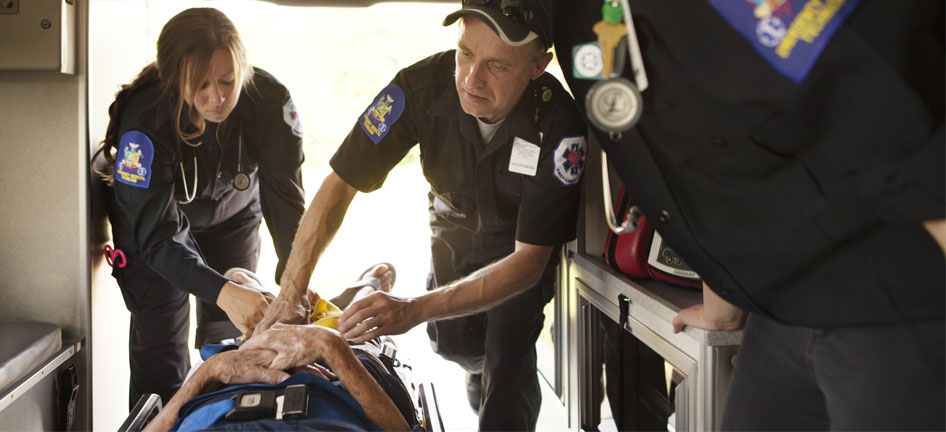The Internet of Lifesaving Things: Smarter Cities, Smarter Response

By Mike Zeto, general manager, AT&T Smart Cities
Boots on the ground. Eyes in the sky. First responders are always there when we need them. And we believe it’s our responsibility to help serve the everyday heroes who help protect us.
All 50 U.S. states, 3 territories and the District of Columbia opted in to FirstNet. That presents a unique opportunity to bridge public safety’s capabilities with the Internet of Things (IoT). This can help create smarter cities and smarter responses. And ultimately, it can help connect first responders to the world around them like never before. It’s an exciting time to explore how technology and connectivity will transform public safety in 2018 and beyond.
Here’s how we see the intersection of IoT and FirstNet helping support public safety. Some already exist and others are future possibilities.
- Connected vehicles – Our all-in-one fleet tracking and management solution, Fleet Complete, just launched for FirstNet customers. It helps dispatch centers and first responders see the status of vehicles in the field like never before.
Fleet Complete details location, destination, speed and engine diagnostics. And it also allows for geofencing and customizable exception reporting. Take a crime scene, for example, or a duty station. Geofencing can give incident commanders better visibility into available resources or help create a log of who goes in and out of an area.
Plus, it comes fully integrated with Enhanced Push-to-Talk, giving first responders a built-in communications platform. That means fleet managers and dispatch centers can speak directly with field operators and first responders. So in the event of an emergency, a dispatcher can visually identify assets in the field instead of putting out a generalized request over the radio, which is what happens today.
Dispatchers can also determine the on-board capabilities of those assets and simultaneously communicate with them. All of this brings transparency and control to public safety. This can mean greater situational awareness and a speedier response for teams.
- Connected infrastructure – We’re working to make cities and municipalities more tech-driven. This can benefit public safety in a big way. Take smart lighting solutions, for instance. Right now, through our Digital Infrastructure solutions, we can retrofit existing lighting to help cities monitor traffic and road conditions and provide situational awareness. This helps cities identify and proactively manage repairs, road closures and maintenance needs to keep roads safer.
This could help firefighters choose the fastest route to a house fire. And decibel sensors placed on lights around the city could also help police detect gunshots when and where they happen.
- Connected drones – We’re working to help first responders improve outcomes. Imagine if paramedics could see what was happening at a car accident before they arrived. The potential to deploy a connected drone and collect information from the scene of an emergency could help EMS personnel make key decisions about the type of response needed. The seconds saved could mean the difference between life and death.
Think of the potential for firefighters using a connected drone as they battle the blaze of a rapidly moving wildfire. As conditions quickly change, firefighters on the front line could still have access to the information they need in near real time from a camera-equipped drone.
- Connected gear – Wearable cameras can provide “see-what-I-see capabilities” to support search and rescue. And along with cameras, wearable sensors can feed data to incident commanders and first responders. This is critical to help improve situational awareness.
For example, the leading cause of death on the job among firefighters is cardiac arrest. Monitoring firefighters’ health data can send early warning alerts to help keep them safe.1 If a firefighter’s heart rate increases, it could trigger the wearable camera to auto stream their current conditions. This would let command centers evaluate the need for backup based on what’s happening in near real time.
As these capabilities are brought onto the FirstNet platform, first responders can be confident they’ll have highly secure, reliable access to near real-time data and video feeds. This information can support response, help with situational awareness and boost collaboration.
Plus, all public safety traffic on the FirstNet platform will be routed through a dedicated core with end-to-end encryption to help meet first responders’ sensitive communications needs.
We’ve only just scratched the surface of possibilities. AT&T is helping shape the future through the Internet of Lifesaving Things innovation. We plan to make it easy for first responders to manage their connections through the launch of AT&T Control Center for FirstNet later this quarter.
And we look forward to empowering first responders by placing innovative and dependable new tools in their hands to help them respond to incidents more quickly, safely and effectively.
1 Based on a 2015 report from the National Fire Protection Association.


